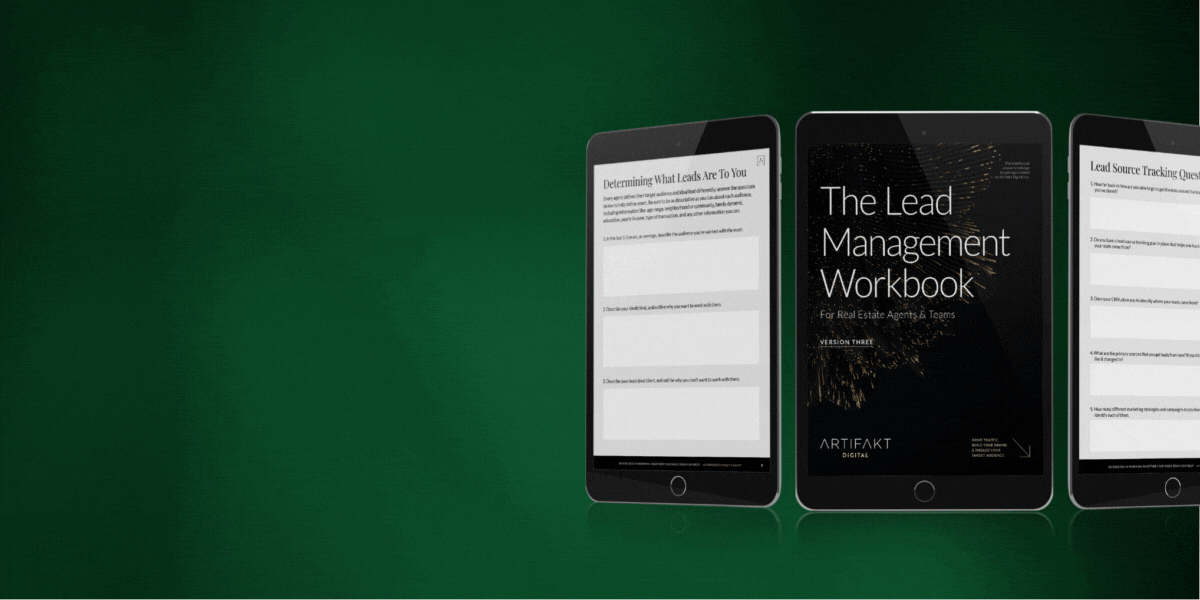As a real estate agent, a big part of your lead-generation strategy is going to be prospecting and building your incoming lead systems.
As part of that strategy, you know it’s unlikely that someone is going to respond the very first time you reach out to them; you’re going to have to follow up, and then follow up on your follow up, and so on…
This is where your touchpoint and follow-up system comes into play. Touchpoints are points in time that you’ve reached out to and followed up with your respective lead.
For example, by email, text, or voicemail. It’s a huge factor in whether you’ll get the attention, and the business, of the people you’re trying to engage.
When it comes to following up, most agents give up way too quickly.
On average, it takes 6 – 8 touchpoints and follow-ups with a person before you can convert them, even if that person originally reached out to you.
Believe it or not, a lot of agents give up after 1 or 2 attempts. They then dump that lead into the ‘bad lead’ category never to be followed up with again.
However, this is obviously a bad approach for a number of reasons:
- It’s possible that the person never received your first attempt to reach out
- All of those emails you sent could’ve ended up in their spam folder
- Maybe they just got too busy with other things
- A hundred other potential reasons…
The key to getting the response you want is by building a robust touchpoint system and understanding that you need to follow up (and, sometimes, follow up a lot).
As a general rule, you should follow up as many times as it takes to get a response; even if that response is a hard no. That may sound annoying, but you really shouldn’t assume that someone doesn’t want to work with you until they’ve actually expressly told you.
To build a successful touchpoint system, you’re first going to have to look at what has worked and what didn’t work in the past.
It starts with analysis. Historically how many times you had to reach out to a lead? When did you follow up? How long did all of it take before you got a response? From all this, you’ll have the information you need to finesse a workable solution and system.
For example, is it better to reach out immediately by phone and leave a voicemail, and then follow up the next day with an email?
Or is it better to reach out immediately by phone, followed by an immediate email, and then follow up the next morning with an email and a phone call, followed by a text message later in the day?
You can find these stats online, of course, but you should still look at historically what works for you as your business and your clients are unique. All of this depends on your situation, your relationship, and the context of what you’re trying to have done.
A lot of times, it can feel like you’re annoying people. For that reason, a lot of agents will have a much less aggressive follow-up system. Worse yet, they may not follow up at all after the first attempt.
But a lot of the time, the person has only received 1 or 2 of your follow-ups anyway. So, following up multiple times in multiple ways is key to get the attention you want.
Most salespeople will reach out early on, and then slowly stop following up over time, but there’s a better approach to take.
How do you know the best way to follow up with and reach out to your leads? The big key is to keep it a mixed bag. For example, never follow up only by email, or only by phone call, or only by text. Keep it balanced, and keep it consistent.
Some of your touchpoint systems can also be built through marketing automation software that sends out the right follow-up content, at the right time, based on what you know works and what doesn’t.
For starters, it’s key to understand that, in most cases, you’ll want your first reach out to be personal and not automated. That’s because each person is going to have different needs, and you’ll need to look into those needs first.
For example, someone could reach out about:
- How much a home in their neighborhood recently sold for
- More information about what’s involved in selling their home
- How much their property might get if it was on the market right now
- Filled out a general contact form on your website
Based on the situations above, you’d want to reach out with something personal around answering their question, setting up a meeting, or making that first point of contact.
But, if they don’t respond, you can put them into your automated touchpoint system until they do.
There are a number of applications that this can be built into. The ones you’ll want to check out are:
- Follow Up Boss: Follow Up Boss does one thing really well, and that is encouraging you to reach out to your leads, as well as which ones to reach out to, how to reach out to them, and when to do it. It removes a lot of the guesswork and helps you build and manage a follow-up system that works. It doesn’t work so well as an automation software, but it does make the follow-up process much easier for you.
- HubSpot: HubSpot does a ton of things, including marketing automation, lead categorization, CRM management, and a lot more. It’s much more than a follow-up system, but it does allow you to build a fully automated follow up system that works and integrates with a ton of other applications and systems. It’s a much more robust solution, so in my opinion, if you’re just looking for a follow-up system, Follow Up Boss is a better choice. If you’re looking for a full marketing solution, HubSpot is a better choice.
At the end of the day, consistency is key. Build your touchpoint system around what works for you, and continually follow it and adapt as necessary.
Remember: just because someone hasn’t gotten back to you, doesn’t mean they don’t want to work with you.
Want to generate more sales by implementing a lead and client nurturing strategy? Download our Lead Nurturing Workbook. It’s a self-guided, interactive workbook where you answer questions about how you attract, handle, and market to your incoming leads, and put together a plan to implement a solid lead nurturing strategy that gets results. And, it’s free to download.




